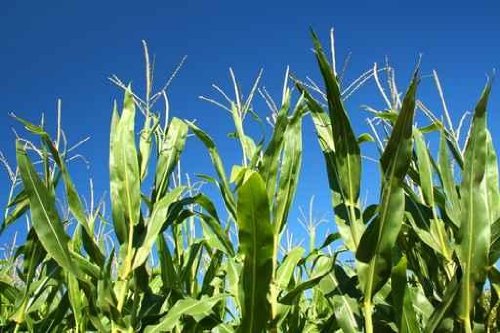Corn prices continue the long retreat from the peak of September 2012, declining to the lowest level since late August 2010. The most recent price weakness reflects both supply and demand considerations.
On the supply side, ongoing reports of yields that exceed expectations in many areas suggest that the next USDA forecast of the U.S. average yield will be at least equal and perhaps exceed the September forecast of 155.3 bushels.
There is still some uncertainty about the magnitude of harvested acreage that will not be cleared up, at least partially, until the USDA releases the next Crop Production report. Even so, it appears that production will be large enough to result in a sizable buildup in stocks by the end of the current marketing year.
On the demand side, the partial shutdown of federal government activities leaves a void in the usual flow of weekly data, including export sales, export inspections, livestock slaughter, and broiler chick placements. The U.S. Energy Information Administration has also discontinued weekly estimates of ethanol production, imports, and stocks.
The primary news on the demand side has been the leaked report of an apparent EPA proposal to reduce the magnitude of biofuels mandates, including renewable (ethanol) mandates, under the Renewable Fuels Standards (RFS) beginning in calendar year 2014.
The RFS currently calls for a total of 18.15 billion gallons of renewable fuels in 2014, including 3.75 billion gallons of advanced biofuels. The remaining 14.4 billion gallons can be satisfied with either advanced or renewable biofuels. The rumored proposal for 2014 is for a total of 15.21 billion gallons of biofuels, including only 2.21 billion gallons of advanced biofuels and a maximum of 13 billion gallons of renewable biofuels.
The possibility of dropping the overall mandate by almost three billion gallons was not widely anticipated. The reduction in the non-advanced component of the mandate from 14.4 to 13 billion gallons has been interpreted as a negative development for corn demand in 2014 and beyond, he said.
Source: University of Illinois agricultural economist Darrel Good.
Artwork: Crop Corn
Farm Supply
Tractors
Corn
Farm Magazines
On the supply side, ongoing reports of yields that exceed expectations in many areas suggest that the next USDA forecast of the U.S. average yield will be at least equal and perhaps exceed the September forecast of 155.3 bushels.
There is still some uncertainty about the magnitude of harvested acreage that will not be cleared up, at least partially, until the USDA releases the next Crop Production report. Even so, it appears that production will be large enough to result in a sizable buildup in stocks by the end of the current marketing year.
On the demand side, the partial shutdown of federal government activities leaves a void in the usual flow of weekly data, including export sales, export inspections, livestock slaughter, and broiler chick placements. The U.S. Energy Information Administration has also discontinued weekly estimates of ethanol production, imports, and stocks.
The primary news on the demand side has been the leaked report of an apparent EPA proposal to reduce the magnitude of biofuels mandates, including renewable (ethanol) mandates, under the Renewable Fuels Standards (RFS) beginning in calendar year 2014.
The RFS currently calls for a total of 18.15 billion gallons of renewable fuels in 2014, including 3.75 billion gallons of advanced biofuels. The remaining 14.4 billion gallons can be satisfied with either advanced or renewable biofuels. The rumored proposal for 2014 is for a total of 15.21 billion gallons of biofuels, including only 2.21 billion gallons of advanced biofuels and a maximum of 13 billion gallons of renewable biofuels.
The possibility of dropping the overall mandate by almost three billion gallons was not widely anticipated. The reduction in the non-advanced component of the mandate from 14.4 to 13 billion gallons has been interpreted as a negative development for corn demand in 2014 and beyond, he said.
Source: University of Illinois agricultural economist Darrel Good.
Artwork: Crop Corn
Farm Supply
Tractors
Corn
Farm Magazines
